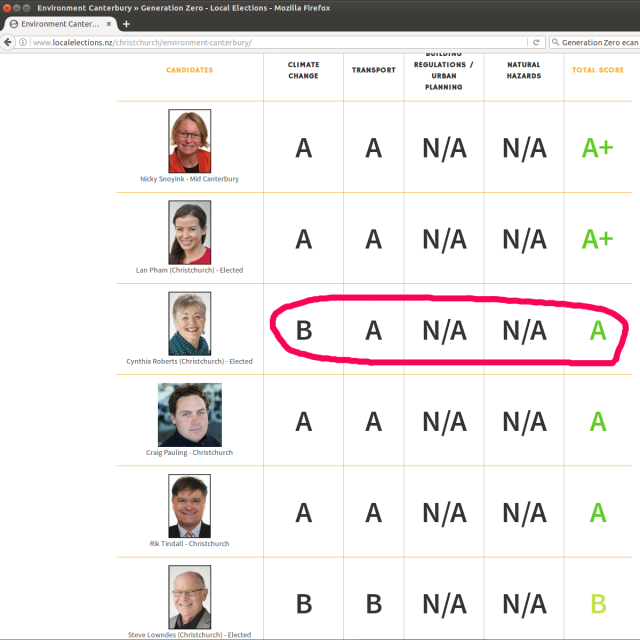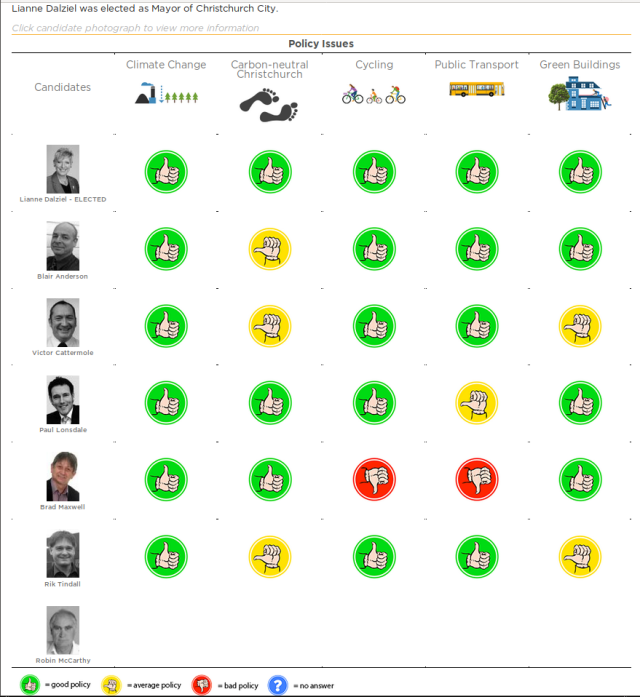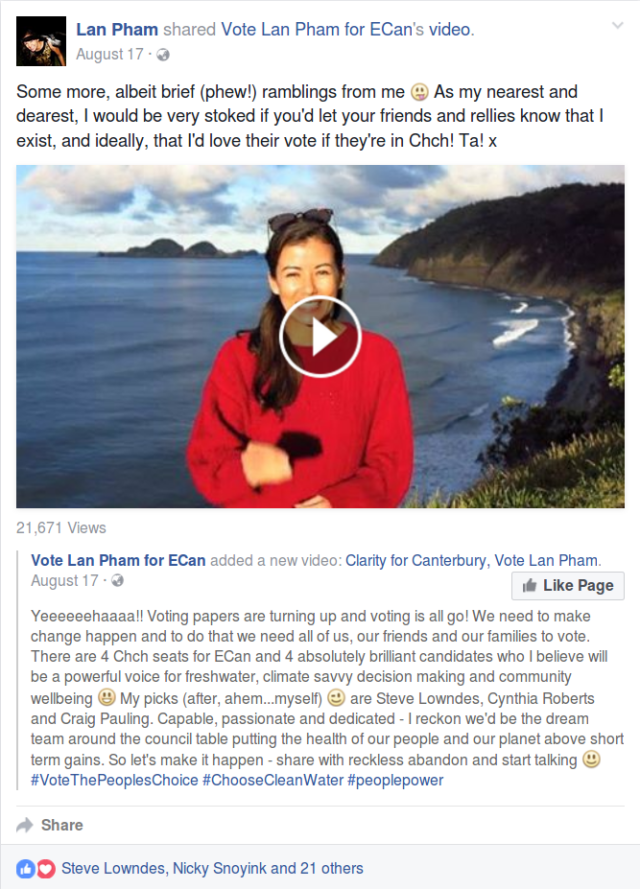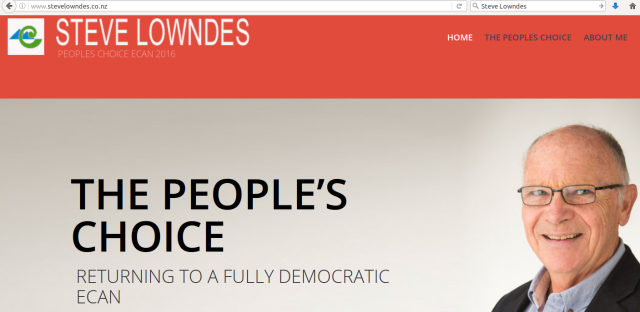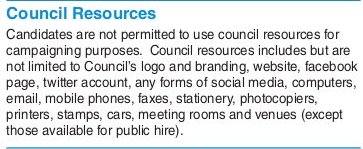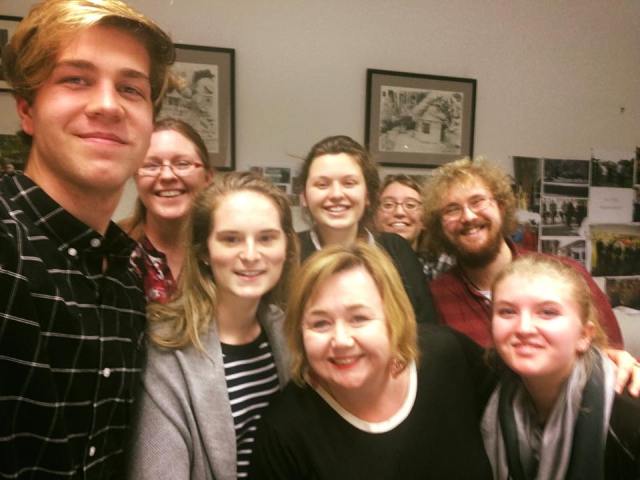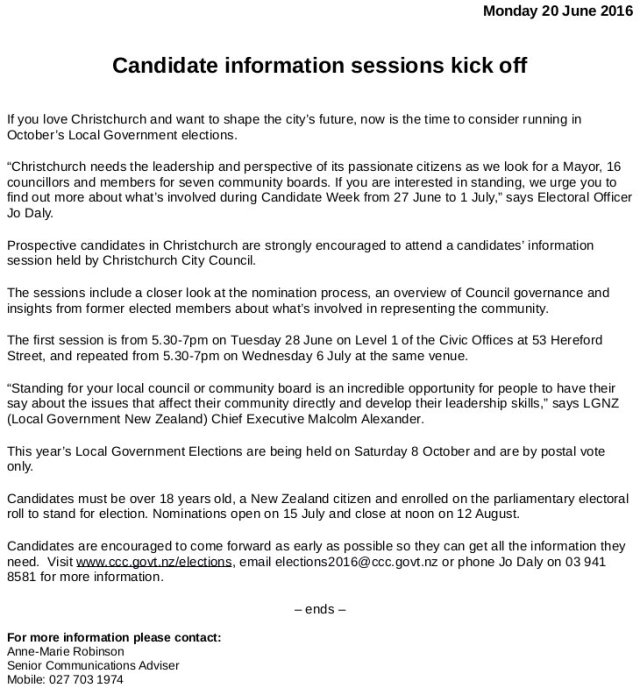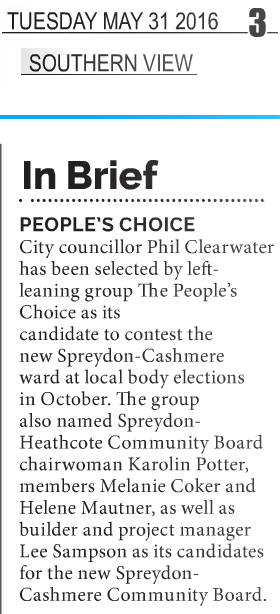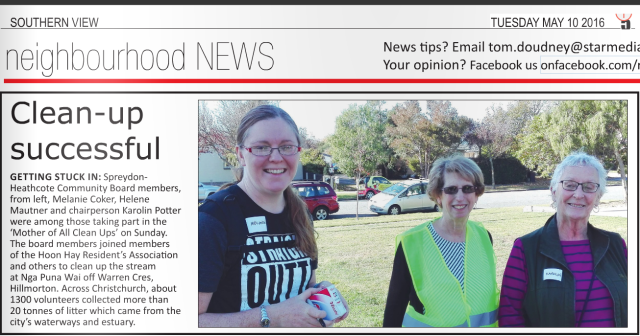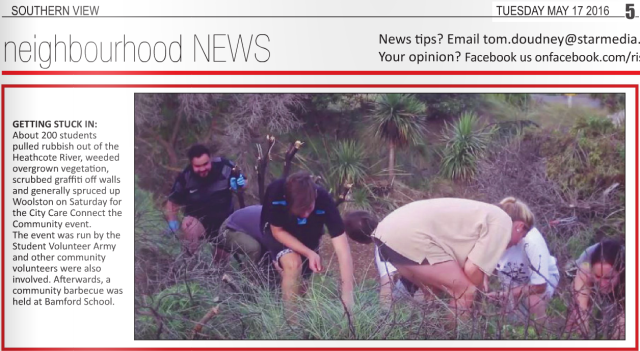“US crude oil futures collapsed below $0 on Monday for the first time in history, amid a coronavirus-induced supply glut, ending the day at a stunning minus $US37.63 a barrel as desperate traders paid to get rid of oil. Brent crude, the international benchmark, also slumped, but that contract was nowhere near as weak because more storage is available worldwide” – Reuters via ODT, 21 April 2020 – But “a record 160 million barrels is sitting in tankers around the world”, as storage is quickly running out. Little will be available beyond May, Al Jazeera reported just before this news. – see Reuters.[1] This expresses the classic crisis of over-production,[2] in which the impacts can only compound and intensify. We have 1918 and 1929 rolled into one.
Oil production “cuts will come too slowly to offset rising inventories, which hit 518.6 million barrels in the US last week, just 3 percent off an all-time record, the Energy Department said. ‘If storage continues to increase at the end of the day, which seems likely considering all these Saudi barrels knocking at the door, then we are going to get to maximum storage sometime in the not so distant future,’ said Bob Yawger, director of futures at Mizuho in New York.”

US oil storage January 2017 to April 2020 – Bloomberg
Source:
Brent and US oil rebound after two days of historic losses, Al Jazeera, 23 April 2020.
Two days after dip, medium-term WTI and Brent oil TradingEconomics.com ‘recovery’ graphs:

WTI year to 23 Apr 2020
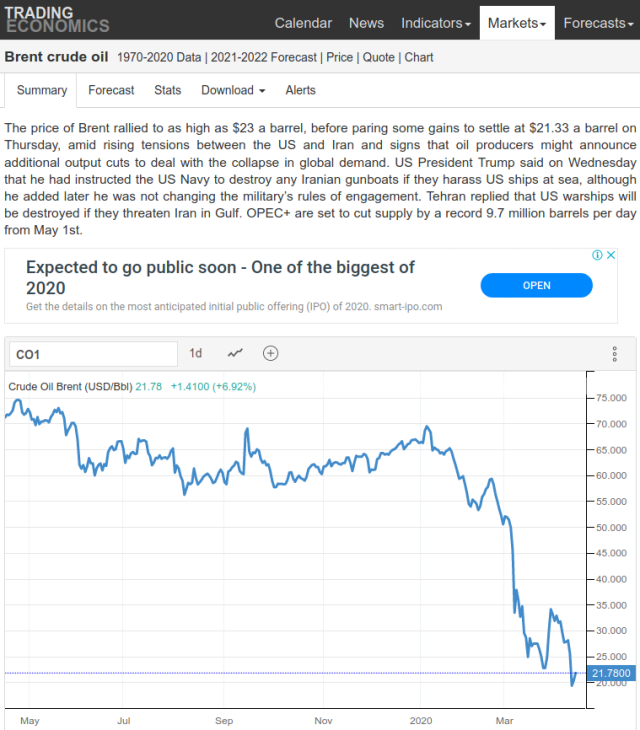
Brent year to 23 Apr 2020
What will happen next?
It is easy to forecast another crude oil price collapse as April closes, to below $10 a barrel, trading through May to hold the $16 latest low line if possible when all the stream spare storage capacity fills up. Output cannot be curtailed by enough producers in time to stop this lengthy return to medium to long term base value lows.
The logic of the market is to settle in at single digit barrels for the duration, while the costliest North American production is demolished. Such is the damage to demand and employment now locked in by pandemic shut-down response and unleashed technological upgrades. This is the beginning of the third Great Depression. Problematic war in the Middle East is the only potential diversion of this course, and the slump’s most likely remedy – under traditional mechanisms.
We have entered a vastly different world, with a deadly pandemic unparalleled since 1918. So will we, the people, shape the new world coming? ‘Recovery must be inclusive for the social contract to survive’, the Inside Story panel concluded, in “Why did US oil prices hit negative territory?”, Al Jazeera, 22 April 2020. Also regard Earth Day: Coronavirus crisis offers big green opportunity and ask Is civil disobedience enough or do we need a climate revolution?, 23 April 2020. The young generation know their future is imperilled and precisely by what: aged infrastructure/maintainers.
Nothing is guaranteed, except that the level of comfort so many knew before Covid is now gone – Goldman: Don’t Expect U.S. Oil Prices To Recover Soon, OilPrice.com, 21 April 2020. So much of financial sector credit is based upon appreciating energy industry shares, almost ‘too big to fail’ but not quite. It is the critical modern resource, the lifeblood of industrial economy, the core carrier of growth: too little or too much energy cost, both inhibit prosperity. The long answer is we have to move on from utter dependency on fossil fuel burning.
Competing large national oil interests – North American, Russian, Middle East – are all pitched against each other, on a currently shrinking transport market with no recovery in near sight. Smaller producer countries – in Africa, Asia and South America – face at this time the same and thus proportionately larger challenges of internal cohesion – resulting from this loss of revenue, profit, reinvestment and jobs.
The March surge of Saudi oil has been shunned by the US administration so will divert to Europe and Asia, flooding the markets there, viz Rising calls to block Saudi crude shipments to US, Al Jazeera, 23 April 2020. China is stockpiling the cheapened flow as fast as it can, as the world’s biggest oil consumer.[3] Contrast to North America’s accelerating market chaos.[4]
“A slow recovery that keeps oil prices down below $20 would mean heightened risk of political instability throughout the oil-producing world. It would strain cooperation in OPEC because the members would not see the benefit of their cutbacks” – Crude carnage: ‘There’s pain everywhere’ says analyst, Al Jazeera, 22 April 2020.
It is essential to recreate trade as sustainable, now and for the future, with whole new food, energy and distribution dynamics and underpinnings. The health framework can then improve for everyone too.
Current values under watch:
tradingeconomics.com/commodity/brent-crude-oil or oilprice.com/oil-price-charts/45 WTI + Brent.
The estimated 12 to 18 month recovery time expected while awaiting a globally available Covid19 vaccine is reinforced by this being the expected time to clear the mounting glut, to effect enough oil/shale well shut-in to start lifting values. A very slow and expensive process, especially in jobs.
This will be a protracted, increasingly painful slump; most like 1929’s. The stark choice of ways out of, it is high time to discuss.[5]
[1] “Stocks are likely to be growing by 10% per month… the entire supply chain is likely to be completely full within 2-4 months. … At the end of January [industry storage] was a mere 200 million barrels below the record high of 3.1 billion barrels – reported in July 2016, shortly after the end of the previous oil price slump. … As the petroleum market moves into massive surplus, storage has become the most scarce commodity in the industry.” – Global oil storage to fill rapidly as consumption plunges, Reuters, 28 March, & “The US Energy Information Administration last week reported a record 19.3 million-barrel crude stock build. There is currently a remaining 21 million barrels of storage available at the Cushing hub in Cushing, Oklahoma. But that will fill up to the brim by mid-to-late May, Rystad Energy predicts”, U.S. crude oil storage is filling rapidly, 18 April 2020.
The World Is Running Out of Places to Store Its Oil, New York Times, 26 March 2020.
“Goldman Sachs … estimates that the world has around 1 billion barrels of spare storage capacity, but much of that will never be accessed ‘as the velocity of the current shock will breach transportation networks’ … ‘With demand collapsing but supply rising after OPEC and non-affiliated Russia failed to reach a production cut agreement in early March, global inventories could reach their maximum capacity within weeks,’ analysts at Eurasia Group said … ‘Industry participants are saying it is virtually impossible to find conventional onshore tanks. Even if OPEC and other producers start restricting their output again soon, the supply overhang from the global lockdown is so big that storage capacity will likely hit its limit by midyear. Already, ports and refiners are turning away oil tankers. This will put even more downward pressure on prices and pose an existential threat to many companies,’ Eurasia Group said. Analysts at Energy Aspects expect the ongoing oil price war between Saudi Arabia and Russia will keep production elevated until the end of the year. This means the world will run out of crude storage capacity early in the third quarter of the year, they added, with product containment arriving earlier” Oil prices could soon turn negative as the world runs out of places to store crude, analysts warn, CNBC, 1 April 2020.
The Surprising Winners And Losers Of The Global Oil Glut, yahoo finance, 20 April 2020.
A hunt for any storage space turns urgent as oil glut grows, Reuters, 21 April 2020.
“Oil prices were already weighed down by oversupply going into 2020 … ‘Market prices are showing that oil is all but worthless now. It’s going to take a long time to draw down the huge supply overhang'” – Crash! US crude futures turn negative for first time in history, Al Jazeera, 21 April 2020.
“OPEC+ coalition… agreed to slash production by about 10 million barrels a day earlier this month, but the cuts won’t kick in until May. Even then, they won’t be enough to balance out the demand destruction from the virus in the short term, which could be as high as 30 million barrels a day… Inventories at the biggest U.S. storage hub in Cushing, Oklahoma, are at the highest since 2017 and are expected to rise further. The industry-funded American Petroleum Institute reported that nationwide crude stockpiles rose 13.2 million barrels last week… Meanwhile, Indian fuel tanks are now 95% full, according to officials at three state-owned refiners” – Brent nears a 21-year low under demand and storage pressure, WorldOil, 22 April 2020.
[2] More e.g.: Overproduction, Wikipedia; The Marxist Theory of Overaccumulation and Crisis, Simon Clarke; Will coronavirus signal the end of capitalism?, Al Jazeera, 3 April 2020.
[3] “Rather than cutting back on imports, China pushed crude oil into storage tanks at almost double the rate in the first quarter of this year than it did in the same period in 2019 as the new coronavirus hit domestic consumption … Other major crude importing countries lack the ability to simply divert oil into storage on the scale that China can, meaning they will have to lower the amount of crude being imported. Even countries with large commercial and strategic storages, such as the United States, will find that the volume of crude available is so much that it will overwhelm available tank space within weeks, rather that months … by itself it’s nowhere near enough to compensate for the loss of an estimated 30 million bpd of global consumption” – China doubled crude oil storage inflows during coronavirus demand hit, Reuters, 20 April 2020.
[4] “an acute state of oversupply in North America … ‘This inflection will play out in a matter of weeks, not months, with the market likely forced to balance before June,’ Goldman analysts warned. In other words, the U.S. oil industry could lose several million barrels per day in the next few weeks in what Goldman analysts called a ‘violent rebalancing.'” The Worst Is Yet To Come For Oil Prices, OilPrice.com, 21 April + Oil Prices Hit $15 For The First Time In 21 Years 19 April + “Canada, Venezuela, Iraq, Brazil, Libya, Ecuador and even the U.S. are seeing forced shut-ins due to storage constraints, COVID-19 and low prices” A Massive Wave Of Shut-Ins Fails To Halt Oil Price Crash 21 April + $1 Oil: Saudi Arabia’s Attempt To Crush U.S. Shale 1 April + “fewest number of active rigs since January 2017.. EIA’s estimate is that the United States still produced 13 million barrels of oil per day on average this week, just 100,000 bpd off the all-time high” The Largest Rig Count Collapse In 5 Years 3 April + “only if the United States joins the cuts” Russia To Cut 1 Million Barrels Per Day, But Under One Condition + The World’s Biggest Oil Deal Can’t Save Crude Prices 6 April + Oil Prices Hit $1 Following A 90% Crash, 20 April + How Oil Prices Could Go To $100 + In Rare Development, Oil Majors Are Forced To Cut Output Under OPEC Deal viz British Petroleum-led project in Azerbaijan, 23 April + “According to Goldman Sachs, global oil storage could be completely full within the next three weeks, and another dramatic crash could follow” Oil Prices Crash 24% As Storage Fears Mount + “unprecedented situation in global energy markets has provided traditional producers with an opportunity to displace incumbents in primarily the U.S. The price war Saudi Arabia started after Russia refused to reduce output in early March has decimated budgets of energy-dependent countries and oil companies. Riyadh and Moscow are playing with fire.. Riyadh is also upping the ante in Asia where Aramco has cut prices by $3 to $5 per barrel, which is the second drastic cut in two months.. energy industry seems to be heading full speed towards a cliff, exporters in Russia and Saudi Arabia prefer to maintain their market share instead of saving the industry. Only time will tell where this strategy will lead to” Saudi Arabia And Russia Fight Bitter Market Share Battle As Oil Prices Collapse, 27 April + “UBS, a Swiss financial firm, sees oil prices rising by as much as 115 percent by the end of the year. ‘While the oil market is heavily oversupplied this quarter, we expect it to move toward balance next quarter and become under-supplied in 4Q this year as lockdown restrictions are eased and oil demand picks up,’ Mark Haefele, chief investment officer at UBS Global Wealth Management, explained. OPEC, which is preparing to roll out its joint plan to cut global oil production by 9.7 million barrels per day, is even more hopeful, predicting a recovery by the second half of the year. Mohamed Arkab, Energy Minister of OPEC’s rotating president Algeria, noted, ‘the global economy is not going to stay paralyzed,’ adding that he predicts the price of the Brent benchmark could reach $40 by the beginning of the third quarter” Are Oil Prices Heading Back Into Negative Territory? + “’this is a never-before-seen level of national economic calamity; history doesn’t get bigger than this’.. Most people, policy makers and economists are energy blind and cannot, therefore, fully grasp the gravity or the consequences of what is happening.. Oil production and prices are unlikely to regain late 2018 levels. Renewable sources will fall behind along with efforts to mitigate climate change. It’s Really Bad.. Gross domestic product (GDP) is proportional to oil consumption.. because oil is the economy. Every aspect of production and use of goods and services requires burning fossil energy. There are approximately 4.5 years of human labor in a barrel of oil. No other energy source comes close to that level of energy density.. Large segments of the U.S. oil industry will have to be nationalized before the year is over.. productivity multiplier will be essential if the U.S. economy is to avoid collapse or for it to recover if collapse is unavoidable.. foolish practice of draining America first since the beginning of tight oil production a decade ago.. The game is over for oil. We should place all of our attention on saving the economy.. a chance to simplify and to learn to be satisfied with no more than what we need. It is unlikely that we will have much choice” The Death Of U.S. Oil, 28 April + The World’s Largest Oil Fund Is Sitting On $725 Million In Unrealized Losses re United States Oil Fund, 29 April + Venezuela Oil Exports Climb As OPEC Agreement Kicks In, 4 May 2020.
[5] By the late 1920s in the United States, “the huge oversupply of crude totally disrupted the market and rational planning, thus creating sudden price collapses.” The October 1930 opening of the East Texas Black Giant, a well reservoir so vast it dwarfed everything previously known in America, caused the $1.85 per barrel price of 1926 – that had dropped to $1 by 1930 – to fall to 15, 6 or even 2 cents at times, by May 1931. – The Prize, Daniel Yergin, 1991, pp.223, 247.
[DRAFT #5 – more to be added.]
“Oil companies are some of the most important payers of dividends across financial market worldwide, providing vital income streams to pension funds and millions of smaller investors. ..fears about the ability of oil companies to maintain dividend payments beyond 2020 are unlikely to subside until a vaccine for Covid-19 is discovered” Oil prices on a slippery slope, Financial Times, 24 April 2020.
“There are about 3.2 billion barrels of crude oil already in global inventories, according to Orbital Insight, a record high. The majority of land-based oil storage is in the form of Floating Roof Tanks (FRT). Overall, Orbital Insight says the world’s FRT storage is at 55.6% capacity, so the firm sees about 2 billion more barrels of storage capacity available. Beyond FRT storage are alternatives, such as fixed roof tanks, salt caverns, or even more expensive floating storage like tankers at sea. Ursa said recent estimates put sea-based tanker storage at about 160 million barrels. Essentially, the lower price of oil drops, the more oil producers look to expensive types of storage capacity as viable. Storage capacity options have an inverse relationship to production methods, as more expensive methods of extracting oil become viable as the price rises. ‘There’s still places to put oil. It’s been diminished because volumes have increased because of the amount that’s been leased out. But they’re going to keep searching out for more and more tanks to fill,’ [Ursa Space Systems analyst Geoffrey] Craig said. ‘If this continues, there’s going to be another phase where you would have to have another shift down in price,’ Craig added. June contracts for WTI crude traded at $16.54 a barrel on Friday, down more than 9% this week. Brent crude traded at $21.22 a barrel, down more than 20% this week. Hall noted that the recent panicked sell-off was largely focused on storage capacity running out in Cushing, Oklahoma. He pointed out that storage facilities in West Texas are below 50% capacity, with Europe and the Middle East each at 60% capacity as well. ‘Throughout the rest of the U.S., in Canada and then across the rest of the world, there’s still a lot of capacity out there for storage,’ [Kayrros market strategist Ted] Hall said. ‘Tanks are relatively full and have been filling, but there’s still a lot of a lot of room to grow globally.’ So long as major production cuts don’t happen while capacity remains, the price of oil will remain tied significantly to how much storage is left. ‘Based on what’s gone on the past week, there’s certainly a chance that we’ll see more breakdowns based on really unique financial moments related to the financial contracts in crude,’ Hall added.” Oil prices could remain under pressure, according to satellite imagery analysis, CNBC, 24 April 2020.
“With a sizable contraction anticipated, the current consensus expectation is for a negative 4% reading. Economists at ING are more pessimistic, looking at the destruction in retail as they forecast a 6% dive in productivity. Retail activity outside of groceries has practically collapsed and manufacturing surveys have reported plummeting activity. Given this situation, we look for the economy to have contracted 6% annualised in Q1 with much worse to come in 2Q.” The Dow Is Eerily Calm – But Next Week Could Be Menacingly Volatile, CCN, 24 April 2020.
 “product that the state-run Bank of China dubbed Yuan You Bao, or Crude Oil Treasure.. branches posted ads on Wechat.. ‘Crude oil is cheaper than water’.. The physical settlement for the benchmark WTI takes place at Cushing, Oklahoma. When storage tanks there fill up, the price on the expiring contract can plunge and become disconnected from the global market. With demand evaporating, inventories at Cushing were soaring. In March and April, they climbed 60% to just under 60 million barrels, out of a total working capacity of 76 million – and analysts reckon much of the remaining space is already earmarked.. ‘The trading at settlement mechanism failed. It shows the fragility of the WTI market, which is not as big as people think’.. Prices in the U.S. physical market, set by reference to the WTI settlement, also plunged, with some refiners and pipeline companies posting prices to their suppliers as low as minus $54 a barrel.. The bank had a total position of about 1.4 million barrels of oil, or 1,400 contracts, according to a person familiar with the matter. It wound up having to pay about 400 million yuan ($56 million) to settle the contracts.. a new wave of selling that swept across oil markets. On Tuesday, the June WTI contract plunged by 68% to a low of just $6.50. And this time it was not limited to U.S. contracts: Brent futures also plunged, hitting a 20-year low of $15.98 on Wednesday, driving the price of Russian, Middle Eastern and West African oil that is priced relative to it to levels near zero.. ‘suspicion of market manipulation or a flawed new computer model’.. Commodity Futures Trading Commission.. exploring.. whether the storage capacity data posted by the U.S. Energy Information Administration accurately reflected the actual availability of space.. CME [Group Inc, which owns the oil-futures exchange] argues.. market working efficiently.. ‘We witnessed history’.. brokerage PVM. ‘For the sake of oil-market stability,” this “should not be allowed to happen again'” The 20 Minutes That Broke the U.S. Oil Market, Bloomberg, 25 April + Icahn Bought Cheap Oil in Monday’s Plummet to Historic Lows, 24 April Ref. Icahn Enterprises Wikipedia + What’s Next for Global Oil Prices?: The Industry May Shut Down , Bloomberg, 26 April 2020.
“product that the state-run Bank of China dubbed Yuan You Bao, or Crude Oil Treasure.. branches posted ads on Wechat.. ‘Crude oil is cheaper than water’.. The physical settlement for the benchmark WTI takes place at Cushing, Oklahoma. When storage tanks there fill up, the price on the expiring contract can plunge and become disconnected from the global market. With demand evaporating, inventories at Cushing were soaring. In March and April, they climbed 60% to just under 60 million barrels, out of a total working capacity of 76 million – and analysts reckon much of the remaining space is already earmarked.. ‘The trading at settlement mechanism failed. It shows the fragility of the WTI market, which is not as big as people think’.. Prices in the U.S. physical market, set by reference to the WTI settlement, also plunged, with some refiners and pipeline companies posting prices to their suppliers as low as minus $54 a barrel.. The bank had a total position of about 1.4 million barrels of oil, or 1,400 contracts, according to a person familiar with the matter. It wound up having to pay about 400 million yuan ($56 million) to settle the contracts.. a new wave of selling that swept across oil markets. On Tuesday, the June WTI contract plunged by 68% to a low of just $6.50. And this time it was not limited to U.S. contracts: Brent futures also plunged, hitting a 20-year low of $15.98 on Wednesday, driving the price of Russian, Middle Eastern and West African oil that is priced relative to it to levels near zero.. ‘suspicion of market manipulation or a flawed new computer model’.. Commodity Futures Trading Commission.. exploring.. whether the storage capacity data posted by the U.S. Energy Information Administration accurately reflected the actual availability of space.. CME [Group Inc, which owns the oil-futures exchange] argues.. market working efficiently.. ‘We witnessed history’.. brokerage PVM. ‘For the sake of oil-market stability,” this “should not be allowed to happen again'” The 20 Minutes That Broke the U.S. Oil Market, Bloomberg, 25 April + Icahn Bought Cheap Oil in Monday’s Plummet to Historic Lows, 24 April Ref. Icahn Enterprises Wikipedia + What’s Next for Global Oil Prices?: The Industry May Shut Down , Bloomberg, 26 April 2020.
“The implosion of crude oil markets in the past week holds a mirror to the broader distress in the U.S. and global economy. Social distancing measures imposed on consumers and business shutdowns enforced to combat the spread of the coronavirus pandemic have led to a collapse in international trade and travel. Gasoline and jet fuel prices have sunk as a result leading to crude oil inventories rapidly filling the available storage space. The lockdowns have also led to a slump in business revenues and consumer spending, causing mass unemployment in the U.S. not seen since the 1930s, at least temporarily. The issue for business earnings, economic growth and stock market values is that the U.S. is more dependent on consumer spending than some other economies.. ‘It shows us that the reality of demand destruction in the economy is more dire than what other risk asset prices, particularly U.S. equity prices, reflect’.. The stock market may have shrugged off the oil slump though in part because the direct hit from low oil prices is limited for Wall Street. The overall share of the energy sector in U.S. equity and even in corporate bond markets is minimal, and many fund managers have steered clear of the industry due to the challenging economics of crude production and the growing adoption of more carbon-friendly investment approaches in the U.S. and abroad. Energy represents less than 3% of the overall S&P 500 index, and around 12% of the index for sub investment-grade corporate bonds.. ” Could the crude oil market bust spell trouble for high-flying U.S. stocks?, MarketWatch, 25 April.
“The price of West Texas Intermediate crude oil futures expiring in May plunged 321%, to -$40.32 a barrel, the lowest level ever recorded” Oil plunges 321% into negative territory for the first time ever as demand evaporates, Markets Insider, 20 April 2020 – WTI:
Date, Closing Price, Open, Daily High, Daily Low
05/04/2020 20.39 19.11 21.42 18.05
05/01/2020 19.78 19.04 20.48 18.07
04/30/2020 18.84 15.64 19.44 15.45
04/29/2020 15.06 13.35 16.78 12.67
04/28/2020 12.34 12.96 13.69 10.07
04/27/2020 12.78 16.84 16.98 11.88
04/24/2020 16.94 16.78 17.97 15.64
04/23/2020 16.50 14.20 18.26 13.35
04/22/2020 13.78 16.18 10.26
04/21/2020 10.01 -14.00 13.86 -16.74
04/20/2020 -37.63 17.73 17.85 -40.32
04/17/2020 18.27 20.00 20.22 17.31
‘There is no reason to be bailing out Middle Eastern overproduction’: Analysts break down how to prevent further oil price volatility, Markets Insider, 25 April 2020 – Brent:
Date, Closing Price, Open, Daily High, Daily Low
05/05/2020 30.97 28.10 32.06 27.77
05/04/2020 27.20 26.10 28.08 25.50
05/01/2020 26.44 26.95 27.88 25.76
04/30/2020 25.27 22.87 25.76 22.87
04/29/2020 22.54 20.66 23.88 20.53
04/29/2020 22.54 20.66 23.88 20.53
04/28/2020 20.46 19.90 21.29 18.73
04/27/2020 19.99 21.55 21.91 19.11
04/24/2020 21.44 21.93 22.70 20.50
04/23/2020 21.33 20.89 23.22 20.07
04/22/2020 20.37 20.23 22.45 15.98
04/21/2020 19.33 26.33 26.50 17.51
04/20/2020 25.57 28.05 28.25 25.37
“Brent crude oil is at its lowest level in 17 years.. The US exports roughly 4 million barrels of oil per day, but much of that outflow will fade as Saudi Arabia and Russia undercut US pricing. Mizuho [Securities]’s analysis pegs the US’s spare capacity at 273 million barrels and estimates the tanks could top out in as soon as four months.. negative prices could become a reality if the US can’t build new storage at the pace of its inventory buildup.. The oil-price war kicked off March 6, when Russia declined to lower production. The Organization of the Petroleum Exporting Countries had hoped to curb supply as the coronavirus outbreak pummeled oil demand around the world. Russia’s move prompted retaliation from Saudi Arabia in the form of massive price cuts, igniting a race to claw more market share” The oil market’s threats combine 9/11 with the financial crisis – and could turn prices negative, analyst says, Markets Insider, 18 March 2020.
“U.S. market history points to a final bottom in August” Stocks will revisit their coronavirus crash low, and here’s when to expect it, MarketWatch, 11 April 2020.
“We have clearly gone to full scale day-to-day market management crisis, and as we said when we first called for negative prices, the physical reality of oil is that it is difficult to handle, volatile, potentially polluting, and actually useless without a refinery. If you had a stinking barrel of oil in your backyard, would you pay someone $100/bbl to take it away? Yes, and you would probably be relieved you were not charged $300/bbl,” Oil could hit negative $100 per barrel next month, according to one analyst, Markets Insider, 22 April 2020.
“The U.S. Energy Information Administration reported last Wednesday that U.S. crude inventories rose 15 million barrels for the week ended April 17 to 518.6 million barrels. That marked a 13th straight weekly climb and followed a record weekly increase of 19.2 million barrels a week earlier.. January 2021 CLG21 contract trading near $29.37 on Monday or still well below the $54 per barrel levels of mid-February that already were viewed as a threat to the viability of some weaker players” Here’s why oil majors may struggle to find bargains in the shale patch, MarketWatch, 27 April 2020.
“The United States Oil Fund (USO) that was responsible for last Monday’s oil crash into negative territory is once again shaking up oil markets, and WTI is now down more than 21% on the day. The USO Fund’s administration, USCF, announced on Monday that it intends to sell off all of its WTI contracts for June delivery—that’s all its front-month contracts that the fund was designed to invest in. Instead, the fund will now focus on futures contracts that are further out. The USO’s breakdown will now be comprised of 30% in the July contract, 15% each in the August, September, October, and December contracts, and 10% in the June 2021 contract. The June 2020 contract fell $3.85 on Monday to $13.09 by 3:52 p.m. EDT. Meanwhile, the July contract is trading $5 higher, and the August contract $8 higher at $21.47. The last time the USO fund shook up the oil market was one week ago today, the last day before the May 2020 futures contract for WTI expired. What set the disastrous events in motion was traders wishing to exit their positions before the contract expired. The USO, which would be unable to accept delivery of physical barrels of oil, headed for the exit, but found few willing buyers. This time around, the USO fund is pulling out of all its near-term contracts over the course of the next few days, sending oil prices reeling once again. The shift away from front-month contracts will amount to dumping 20% of its $3.6 billion portfolio over the next few days, Financial Times reports, citing a regulatory filing by USO.” World’s Largest Oil Fund Is Once Again Crashing Crude Markets, OilPrice.com, 27 April 2020.





 “product that the state-run Bank of China dubbed Yuan You Bao, or Crude Oil Treasure.. branches posted ads on Wechat.. ‘Crude oil is cheaper than water’.. The physical settlement for the benchmark WTI takes place at Cushing, Oklahoma. When storage tanks there fill up, the price on the expiring contract can plunge and become disconnected from the global market. With demand evaporating, inventories at Cushing were soaring. In March and April, they climbed 60% to just under 60 million barrels, out of a total working capacity of 76 million – and analysts reckon much of the remaining space is already earmarked.. ‘The trading at settlement mechanism failed. It shows the fragility of the WTI market, which is not as big as people think’.. Prices in the U.S. physical market, set by reference to the WTI settlement, also plunged, with some refiners and pipeline companies posting prices to their suppliers as low as minus $54 a barrel.. The bank had a total position of about 1.4 million barrels of oil, or 1,400 contracts, according to a person familiar with the matter. It wound up having to pay about 400 million yuan ($56 million) to settle the contracts.. a new wave of selling that swept across oil markets. On Tuesday, the June WTI contract plunged by 68% to a low of just $6.50. And this time it was not limited to U.S. contracts: Brent futures also plunged, hitting a 20-year low of $15.98 on Wednesday, driving the price of Russian, Middle Eastern and West African oil that is priced relative to it to levels near zero.. ‘suspicion of market manipulation or a flawed new computer model’.. Commodity Futures Trading Commission.. exploring.. whether the storage capacity data posted by the U.S. Energy Information Administration accurately reflected the actual availability of space.. CME [Group Inc, which owns the oil-futures exchange] argues.. market working efficiently.. ‘We witnessed history’.. brokerage PVM. ‘For the sake of oil-market stability,” this “should not be allowed to happen again'”
“product that the state-run Bank of China dubbed Yuan You Bao, or Crude Oil Treasure.. branches posted ads on Wechat.. ‘Crude oil is cheaper than water’.. The physical settlement for the benchmark WTI takes place at Cushing, Oklahoma. When storage tanks there fill up, the price on the expiring contract can plunge and become disconnected from the global market. With demand evaporating, inventories at Cushing were soaring. In March and April, they climbed 60% to just under 60 million barrels, out of a total working capacity of 76 million – and analysts reckon much of the remaining space is already earmarked.. ‘The trading at settlement mechanism failed. It shows the fragility of the WTI market, which is not as big as people think’.. Prices in the U.S. physical market, set by reference to the WTI settlement, also plunged, with some refiners and pipeline companies posting prices to their suppliers as low as minus $54 a barrel.. The bank had a total position of about 1.4 million barrels of oil, or 1,400 contracts, according to a person familiar with the matter. It wound up having to pay about 400 million yuan ($56 million) to settle the contracts.. a new wave of selling that swept across oil markets. On Tuesday, the June WTI contract plunged by 68% to a low of just $6.50. And this time it was not limited to U.S. contracts: Brent futures also plunged, hitting a 20-year low of $15.98 on Wednesday, driving the price of Russian, Middle Eastern and West African oil that is priced relative to it to levels near zero.. ‘suspicion of market manipulation or a flawed new computer model’.. Commodity Futures Trading Commission.. exploring.. whether the storage capacity data posted by the U.S. Energy Information Administration accurately reflected the actual availability of space.. CME [Group Inc, which owns the oil-futures exchange] argues.. market working efficiently.. ‘We witnessed history’.. brokerage PVM. ‘For the sake of oil-market stability,” this “should not be allowed to happen again'” 